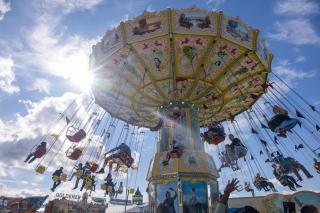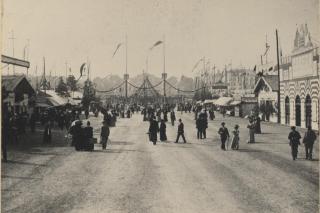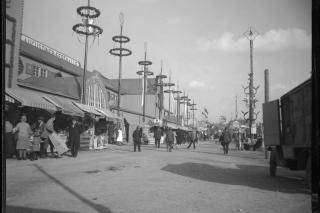Oktoberfest in the old days: all the fun even without loops, ghost trains and carousels
Today, it’s not only music that can be heard when crossing Oktoberfest grounds. Lights glitter all around, animated figures invite you to ride on amusements, and performers outperform each other when touting their attractions. It’s hard to imagine it today, but there was a time when Oktoberfest operated without electricity.

Let the games begin!
And even though it had to manage without electrical light and electricity, the first Oktoberfest in 1810 gave us plenty of reasons to smile. It marked the wedding of Prince Regent Ludwig I., who later became king, and Princess Therese of Saxony-Hildburghausen, for which a huge horse race was installed at Theresienwiese in their honor. The field that was still located on the outskirts of the city at the time was known as ‘Theresienwiese’ from then on in, after the name of the bride — a very unique wedding present. The pair were happy, the crowd enjoyed themselves — this paved the way for a folk festival that was to become famous throughout the world.
Tree climbing instead of the devil’s wheel
In the 19th century, they made do with what was already available to entertain Oktoberfest guests. Trees, for example. In the 1860s, Oktoberfest staff introduced an attraction with a simple and obvious name: tree climbing. Participating boys had to clamber up a tree which had been stripped smooth to make the task that bit more challenging. It often led participants to slide down the tree, much to the amusement of spectators. Whoever made it to the top could select a prize from the various trinkets hanging from the tree. They usually consisted of food that wasn’t readily available at the time.
Eating fruit puree instead of riding a chairoplane
The Oktoberfest attractions of the past remind us of a child’s birthday party today. Although they didn’t play tag, wheelbarrow races and even sack races were favorites. Eating fruit puree was another highly popular pastime. This involved both competitors sitting face-to-face with a blindfold over their eyes while feeding each other fruit puree. You can imagine how amused spectators were as they stood gazing at the messy faces of the participants.
They had a lot on their plates in the olden days!
This game also reminds us of children’s carnival — and yet it guaranteed laughs and high spirits in the early days of Oktoberfest. In those days, ‘sausage on a string’ provided the ultimate fun for German youngsters, but in 1869 this game took on a new format that involved catching a quarter goose. Participants had to balance on a moving barrel and hope for a lot of luck to make it to the end. When they arrived, a reward in the form of a piece of goose attached to a string awaited them. It was both a prize and a meal. Generally, it was gobbled up immediately.

